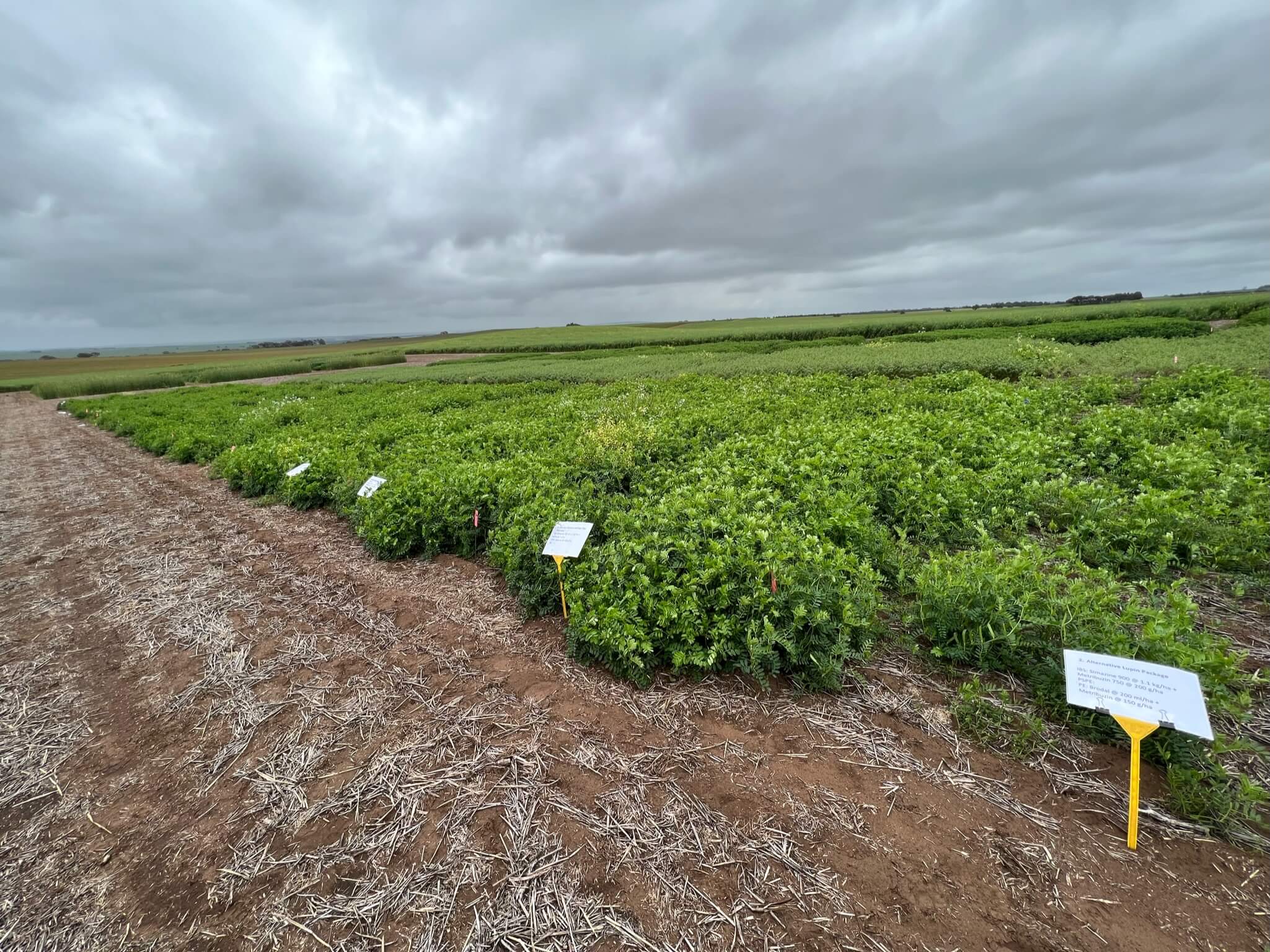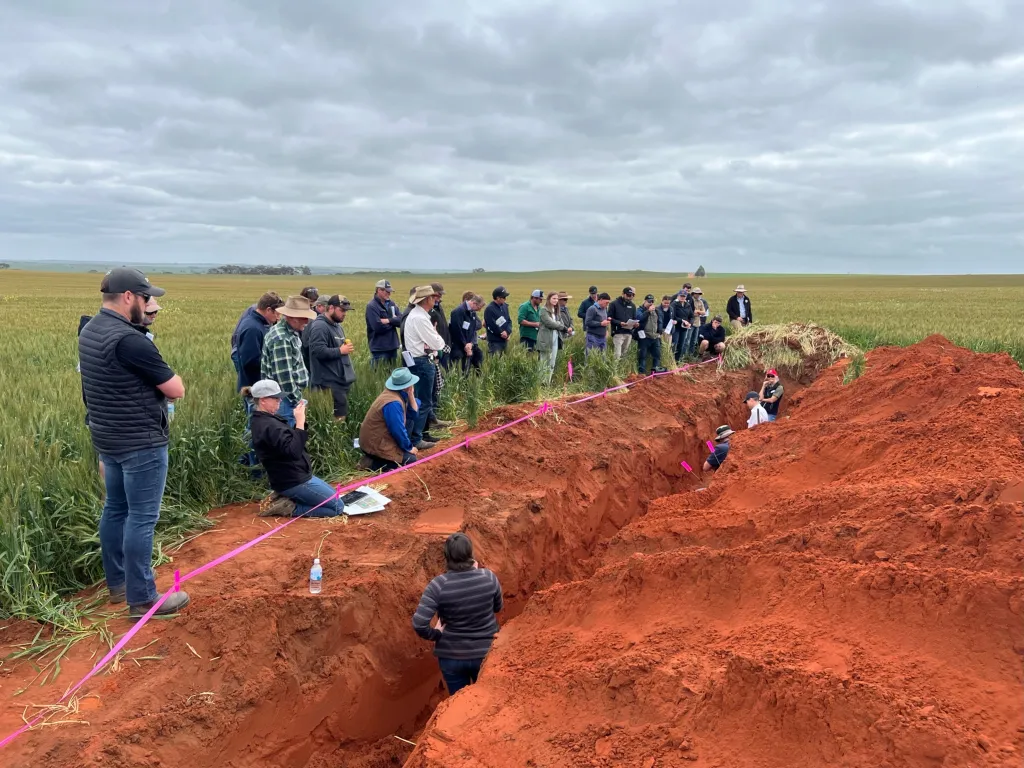FEED365 Katanning Spring Field Day - Farmer Summary
By Kate Parker, WMG Project Officer
This month WMG Project Officer Kate Parker had the opportunity to attend the Department of Primary Industries and Regional Development (DPIRD) FEED365 Spring Field Day along with several WMG members. The field day, held at the DPIRD Katanning Research Station was a chance to take a guided tour of the multiple pasture types and mixes in their peak growth and hear from project leads who discussed pasture management, grazing management, and best forage systems in a drying climate.

The following is a collection of synthesised notes taken by Kate that covers the presentations and sessions she attended over the course of the day.
Introduction
At this site, there are 48 0.5ha plots that were established in 2021. The researchers assess FOO every 3 weeks and adjust stocking rates based on this to account for 4kg DM/head/day. The sheep are held on these plots for around 6 weeks, weighing every 10 days. In summer there can be around 5 animals/ha on plots and up to 50 animals/ha at peak biomass. There is a cap on 20 animals per plot. Plots are only fertilised at seeding.
The tour looked at the following plots:
Annual Pasture Plots
Triticale

This plot had an ADG of 300g/day. Although not commercially available in WA (it will be next year) it has been doing well in NSW. At its peak, it was recorded as 7t biomass. Triticale can be grown in a range of different soil types and has shown promise in creating a permanent system with an annual species.
Control

The control plots consist of two different kinds, an annual pasture (winter) and stubble (summer). In general, the plots are dominated by capeweed and are the least productive in terms of stocking rate and adg. This year they were unable to graze control plots over summer due to the dry start in an attempt to decrease risk of bare ground and subsequent erosion over summer.
Subclover base sown to oats, triticale and cereal rye
This plot involved the sowing of oats, triticale and cereal rye into a subclover base. Researchers noted a visual domination of triticale. This plot was able to sustain 50 sheep/ha at peak and able to graze over summer. There was another plot sown to a multispecies clover mix that performed better.
Oats
This plot was sown to a mix of oats with a marked domination by black oats. Researchers predict a higher regeneration in this plot. ADG was good however 100g/head less than the triticale plot and sheep began losing weight in the 2nd 3 weeks.
Shrubs

This plot was described as a ‘cafeteria trial’ with 15 different species of shrubs with a range of palatability. Researchers noted palatability scores daily with 0 meaning shrub was untouched and 10 meaning shrub was gone. The sheep put in this plot went to the tag bushes first, then started making their way through the saltbushes. Palatability was noted to vary between plots depending on soil type, water logging and other factors. least palatable was noted as regodia, with sheep leaving this shrub untouched even when it was the only one left. The benefit of uneaten shrubs is to provide shelter. Old man saltbush was noted to have 8x biomass compared to others. In march, this plot was the only option for grazing. Establishment phase of 12 months. As saltbush is only meant to be 30% of diet, the plots were inter sown with serradella, ryegrass and triticale.
Triticale and cereal rye
This plot is destined to be sown to a summer crop in October. It took 60DSE//ha to smash it in preparation. Some of the options being considered are sunflower, sorghum and tillage radish. The past 2 years summer crop has been radish which was noted that the sheep loved.
Perennial Pasture Plots
Mixed annuals and perennials
Cocksfoot, lucerne and chicory sward were a focus in this plot with cocksfoot being the first to get away following the break with lucerne slightly behind but chicory failing establishment. It was noted that once perennials reached density, capeweed had a rough time trying to compete which contributed to the lower weeds in this plot. This years grazing was later than usual due to the season but this plot remained the 1st option in winter. Production weight gains were lower than other perennial plots at 100g/head/day in summer. Researchers recommended a 2 year prep period to reduce emergence of ryegrass and to observe animals to ascertain whether they are pulling out perennials on the first graze. It was quoted there is a 4-6yr breakeven time for perennials and if establishment fails, this time gets pushed out indefinitely.
Veldtgrass and Serradella

This plot consisted of Veldtgrass and serradella with general consensus that Veldtgrass is one of the most underrated perennials. It is a c3 temperate, drought tolerant and is summer active with no dormancy period, even growing over this past summer. It was noted that this may be the case in Katanning however the West Midlands region experiences on average a 4 degree increased difference at every point in the year. The Veldtgrass is said to be best partnered with serradella on deep sand. The plot recorded 9 weeks of grazing over the summer with a 6-3 week rest and then ready to go again. It is the most productive plot with the ability to graze every summer including grazes this year in November and January, a total of 80 days over summer. This plot recorded the highest weight and condition score gains out of all the perennial plots.
Kikuyuu and serradellas

This plot consists of Kikuyuu with 2 different serradellas, Margherita and Serramax. it was marked as the best serradella plot at this time with 70-75% cover and 25% cover by Kikuyuu in summer. The Kikuyuu is frost tolerant as it comes from high altitude in Kenya so is better with cold temperatures than other subtropicals. This plot was grazed the least and was not able to be grazed over summer however sheep put on more weight in this plot than any others, likely due to the serradella. It was noted that the combination of the two species of hard-seeded serradella has worked well. There was discussion around the benefits and downfalls of hard versus soft seeds.
Subclover ryegrass mix
This plot is modelled as a traditional self-regenerating paddock. It had the least amount of grazing with only 6 weeks in september 2023 however does well on ADGs.
Bisurella
This plots replicates were next door to each other which although not ideal was due to the need for a heavier soil type. The intention for the low palatability bisurella was to graze out everything else in the paddock to be left with pure bisurella. Unfortunatley the sheep were pulled out due to photosensitivy and sunburn concerns, a known risk when utilizing this pasture species. It is currently a work in progress to determine the exact cause of this in the species and sheep have not returned to graze this plot.
Shrub plot 2
This plot is a replicate of the plot mentioned above and was described as the most productive shrub plot, theorised to be due to greater access to the water table in the area. Ayers green produced 300kgDM/ha however grows too high for the sheep to reach. Old man saltbush recorded 1000kg Dm/ha with high moisture content. Sheep were noted to be more willing to eat everything in this plot compared to the other one. It was recorded to have reduced the need for supplement feeding by 30%. TAR has antimethanogenic properties and highest nutritional value however the sheep wont touch it. A shrub book has been released recently to assist growers looking into then – saltbush MLA guide. It was recommended that if growers want to grow shrubs, they need to order them 6 months to a year in advance from a nursery to be able to plant later.

Kate and the other WMG members who attended the event were able to do so due to WMG’s involvement in the FEED365 Project. For more information about this project, be sure to head to the project page, and for any clarification or a comprehensive set of notes from the day, please contact Kate at projects@wmgroup.org.au.













